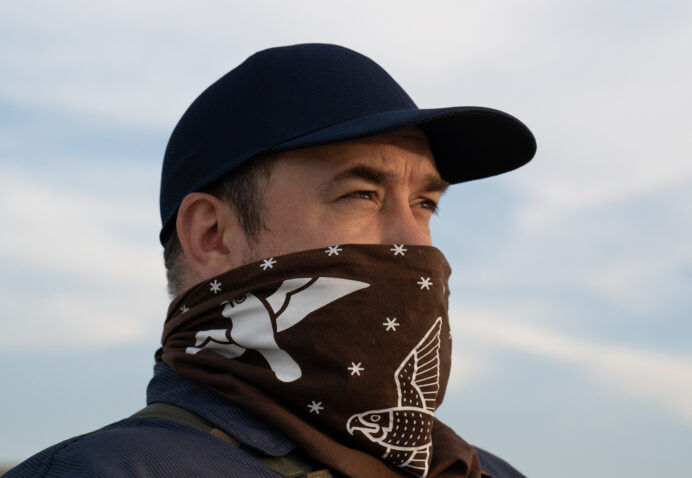This article originally appeared in the 2022 Eastern Mass Hawk Watch annual newsletter.
Massachusetts offers year-round intrigue for the hawkwatcher. Once again, this year provided several unique stories in my travels around the state in pursuit of raptors.
September 14, 2021 – Summit Merlins at Watatic
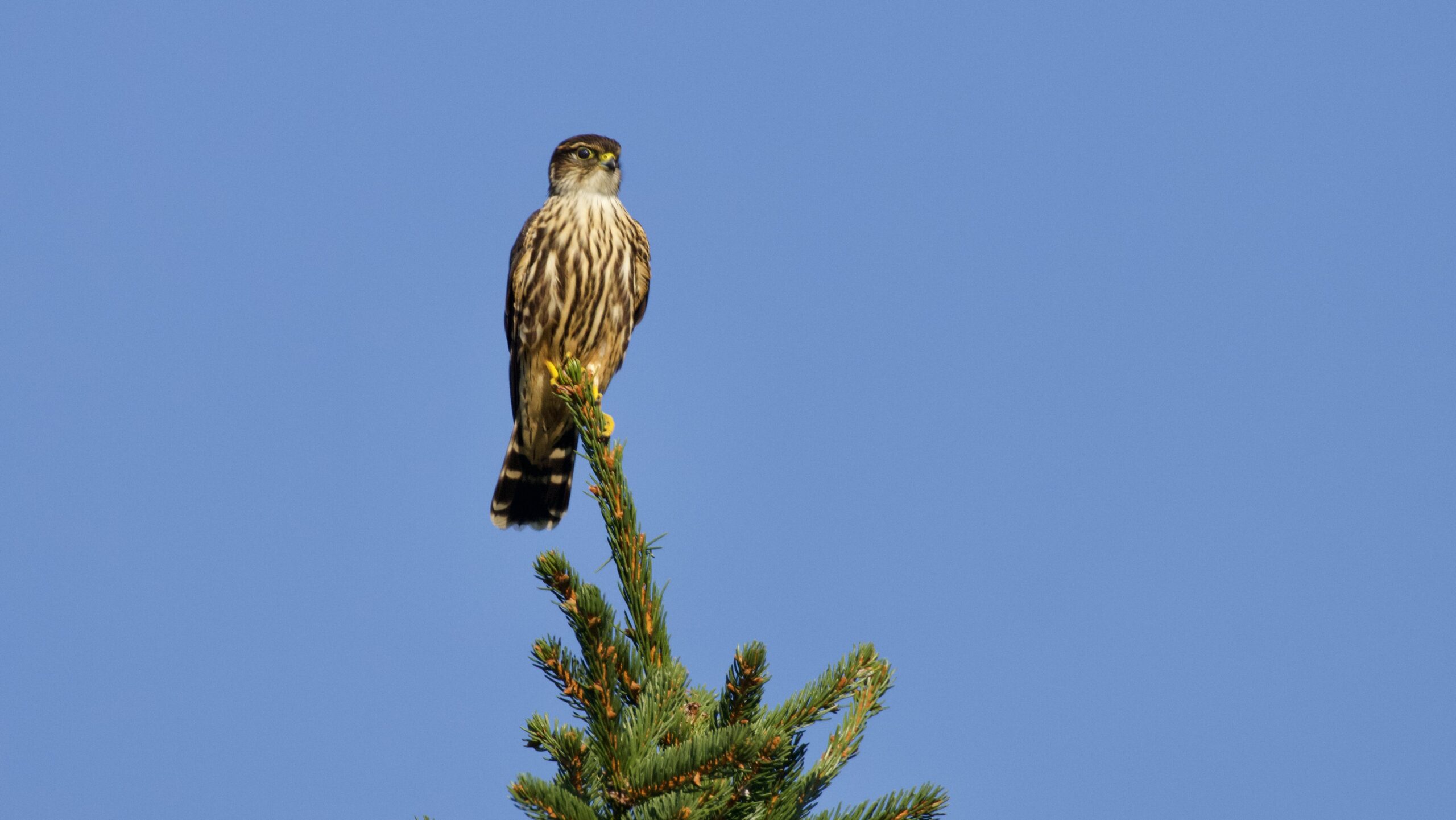
On a particularly restless morning, I reached the top of Mount Watatic to hawkwatch earlier than usual, around 7am, and was given a glimpse of how unreal the mountaintop is at first light. A trio of Merlins were darting amongst the evergreen treetops at the summit, harassing Blue Jays, snagging insects, and putting on an amazing show. For 30 minutes they cruised around unconcerned with my presence, giving me a great reminder that it’s always worth getting up there early!
November 7, 2021 – Patch Bird #100 in Cambridge
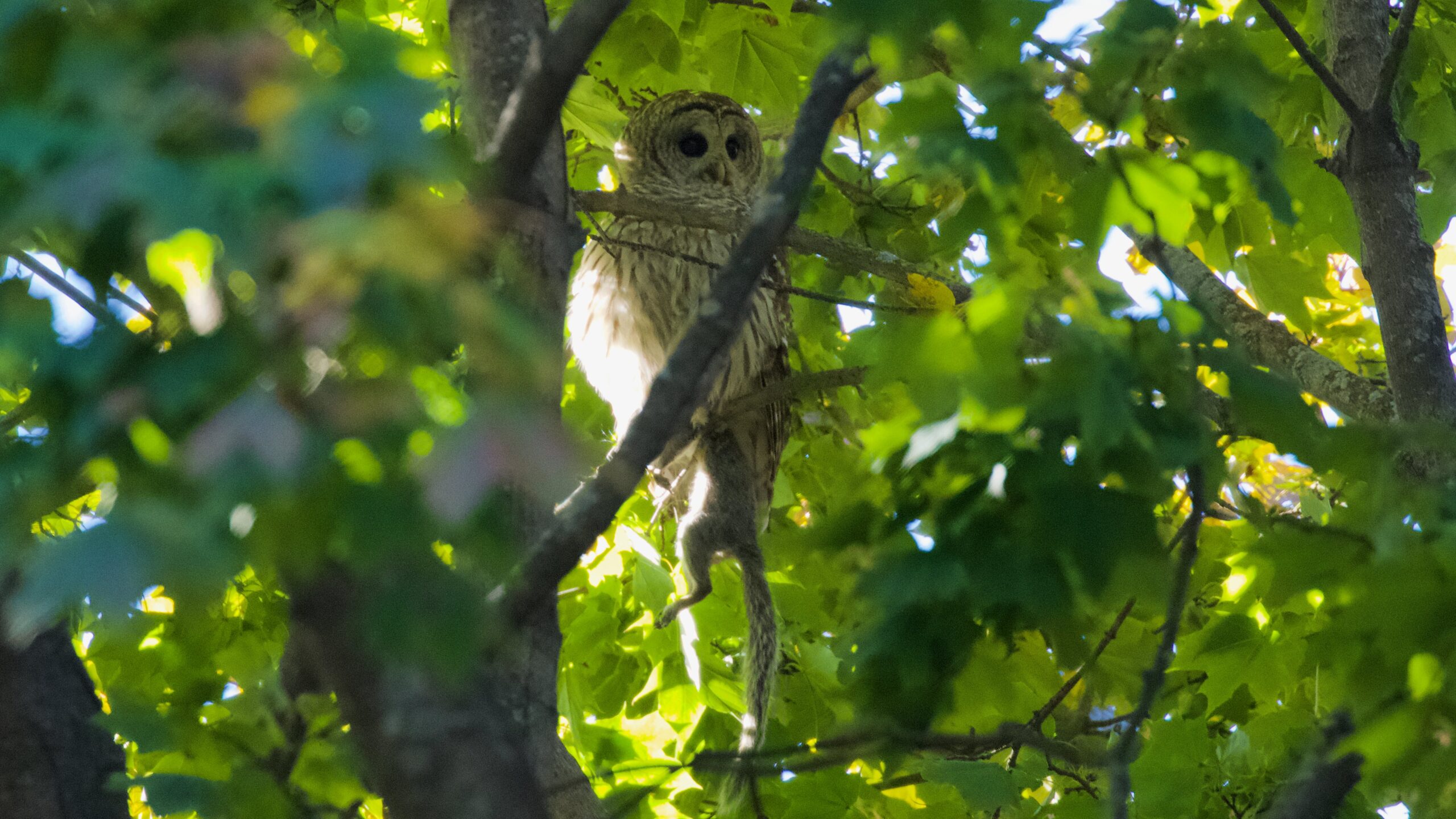
For the last 6 years, my local patch has been a small park called the American Academy of Arts & Sciences in Cambridge. Over the years I’ve gotten familiar with the regular raptors (Cooper’s & Red-tailed Hawks) and songbirds in the patch, but had also built up a surprising count of total species, including Red-shouldered, Broad-winged, and Sharp-shinned Hawks, Peregrine Falcon and American Kestrel. After 6 years, my patch list stood at 99 species until I was lucky enough to pick up a Barred Owl for #100 this past November! I followed a racket of corvid noise to uncover the big Barred clutching a Gray Squirrel it had captured.
December 6, 2021 – Belle Isle Marsh Education & Research Station in Action

Belle Isle Marsh Reservation in East Boston, MA is a critical habitat for many bird species and a true jewel for birders in Boston. In Winter, it is excellent for hawks, falcons and owls. Park Supervisor Sean Riley has been running the Belle Isle Marsh Education & Research Station since 2020. Sean led a large group bird walk in the morning, and I was fortunate to observe his team band a juvenile Red-tailed Hawk afterwards. Banding wintering birds gives the team insight into what species use the habitat, how long they stay and where they might be off to next.

February 6, 2022 – 4 Gray Ghosts at Once in Saugus
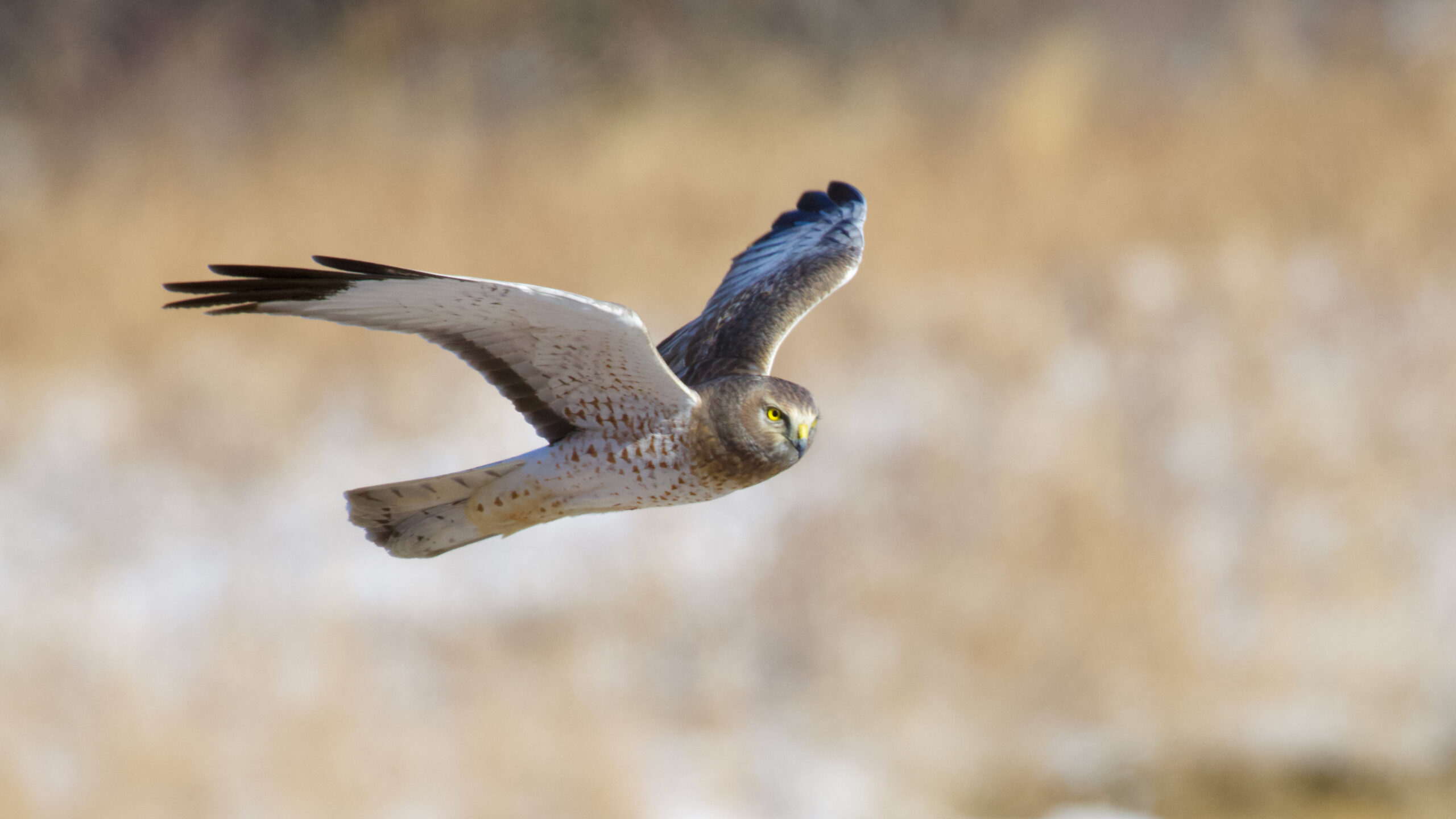
While birding at Rumney Marsh this Winter, I took a moment to cast my binoculars across Route 107 at the distant Bear Creek Sanctuary. Along the steep banks of the landfill, I saw an adult male Northern Harrier pecking at some prey along the edge of the hill. The bird looked up, and suddenly a second Gray Ghost cruised overhead, dipping low to investigate. From the opposite side, a third Gray Ghost appeared even higher, making it 3 individuals in a single glass! I couldn’t believe my luck, until I dropped my binoculars and just managed to catch the white rump of a 4th Ghost, passing within 50 feet of me in Rumney Marsh. Amazing!
February 11, 2022 – Abieticola in Cambridge
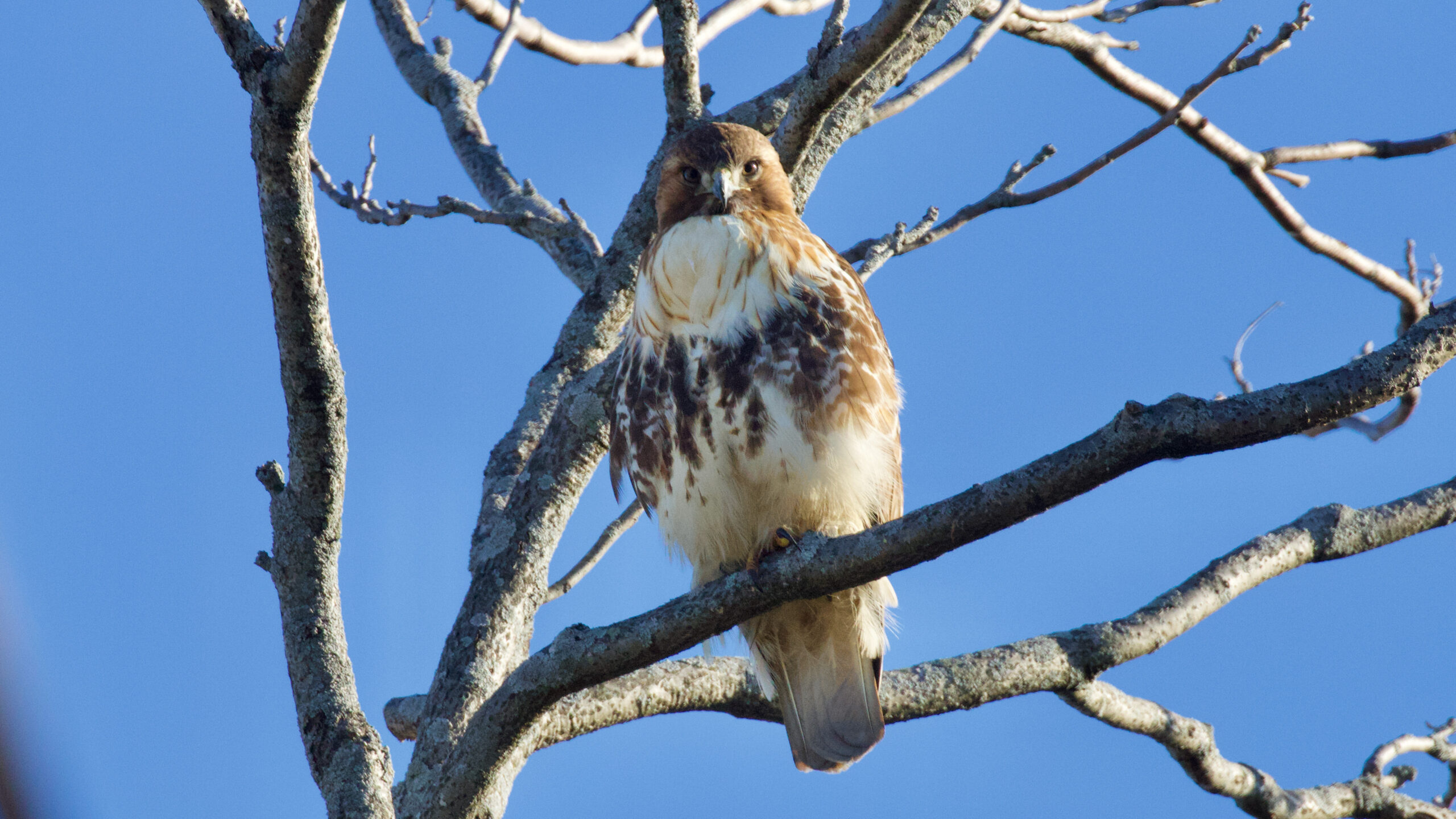
On two different occasions this Winter, I got eyes on a Northern/abieticola subspecies of Red-tailed Hawk in the middle of Inman Square, Cambridge. These migrant Red-tails have a darker overall appearance, marked by an extremely dark and heavy bellyband as adults. I got a partial look at this bird in January, but got a much better view a month later. The hawk’s nearly black bellyband made it stand out easily from the lighter Eastern/borealis locals.
April 19, 2022 – Red-tail Scavenging an American Woodcock Window-strike
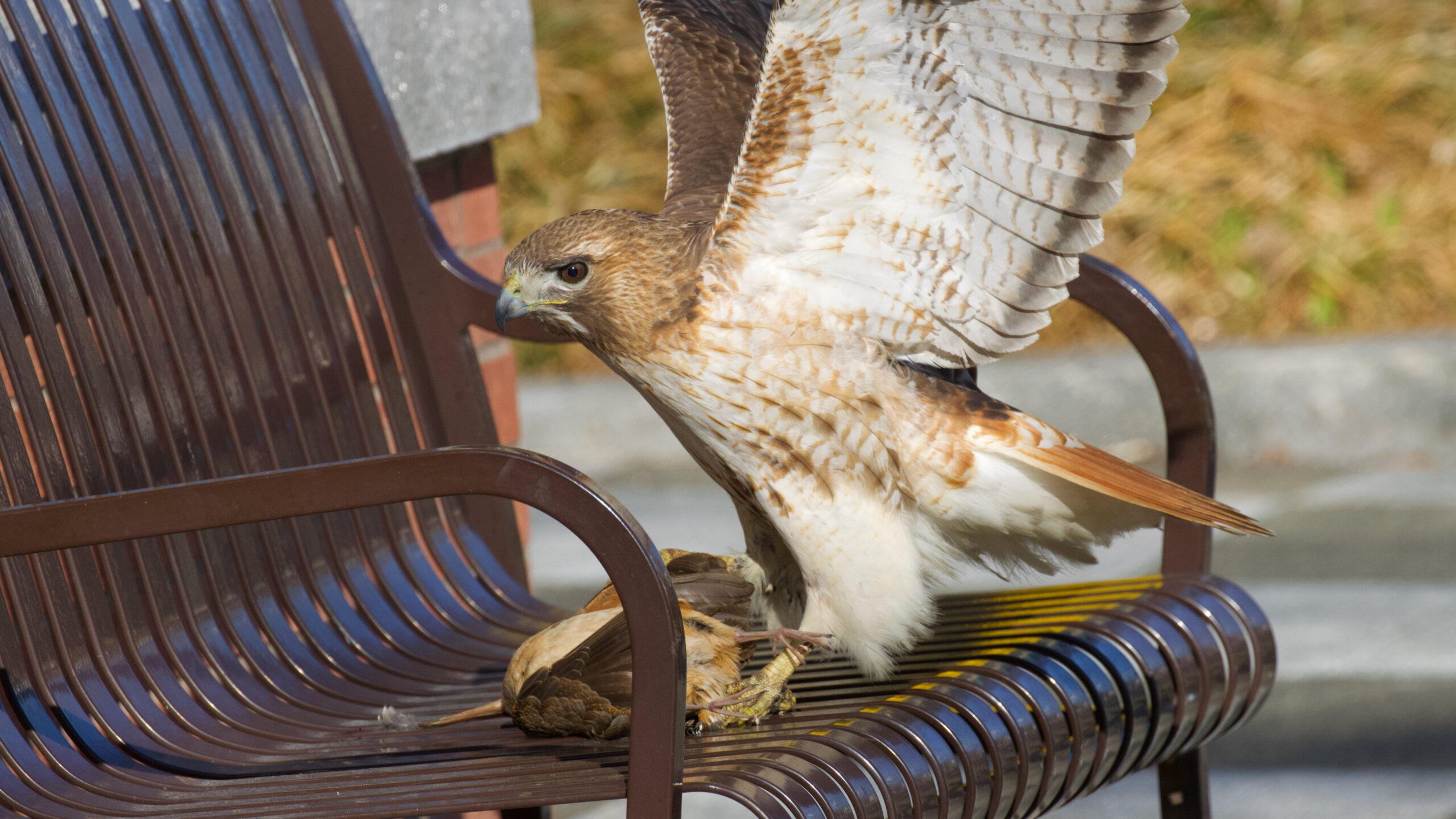
Walking home from work one evening through Kendall Square, Cambridge, I came across an adult Red-tailed Hawk at street lamp level. I couldn’t tell what it was hunting but it made a swoop and eventually came down upon a sidewalk bench. It took me a few moments to put it together, but the hawk found a dead American Woodcock that had presumably crashed into a window along the street. This neighborhood of glass biotech buildings is likely a real problem for migrating birds and collisions. At least this accident led to an easy meal for the hawk: it spent the next 30 minutes eating the Woodcock.
